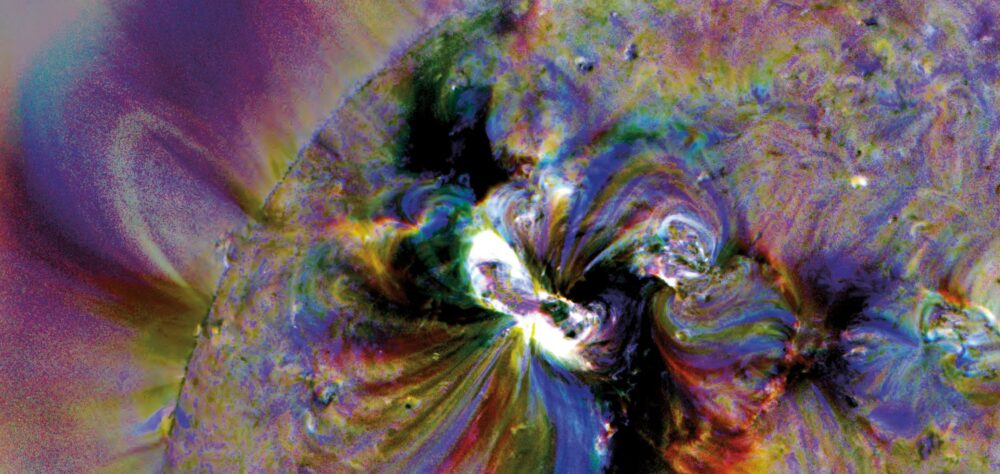Solar and stellar Coronal Mass Ejections (CMEs) are huge eruptions of magnetized plasma from the Sun and stars. Solar CMEs can cause severe space weather disturbances impacting radio communications, GPS, power grids, and satellites near and on Earth, whereas stellar CMEs may pose a hazard to the habitability of exoplanets.
Coronal dimmings have been observed as strong but temporary reductions of extreme-ultraviolet and soft X-ray emission associated with solar CMEs in the low corona for more than 45 years. Dimming regions map to closed field lines that become either stretched or temporarily opened during the eruption and are a result of the depletion of coronal plasma caused by the expansion and mass loss due to the CME. Coronal dimmings are unique as they appear during the entire evolution of a solar CME, from the pre-eruption phase to the post-event recovery of the corona. Recently post-flare coronal dimmings have been systematically identified in irradiance profiles of solar-like stars, indicative of stellar mass ejections.
The multi-disciplinary team aims to understand the initiation, magnetic configuration, and mass loss of solar CMEs through the investigation of the magnetic and thermodynamic evolution of the associated coronal dimmings. Experts in solar and stellar research will perform detailed case studies, combining observations and simulations and will relate these results to Sun-as-a-star observations to further investigate the potential of coronal dimmings for detection and characterization of CMEs on Sun-like stars.

